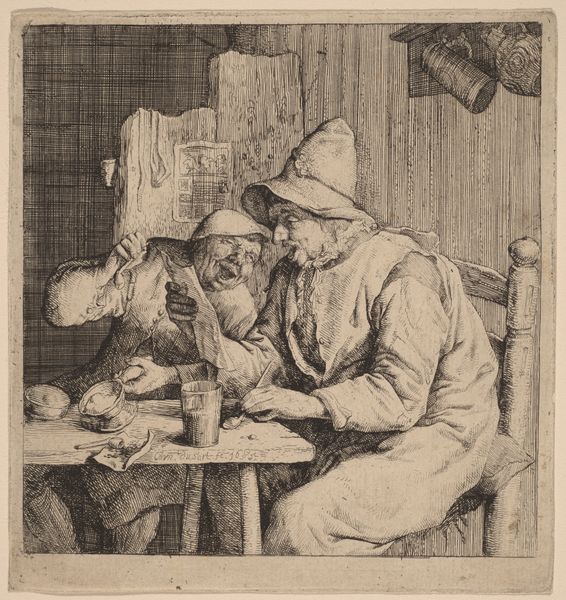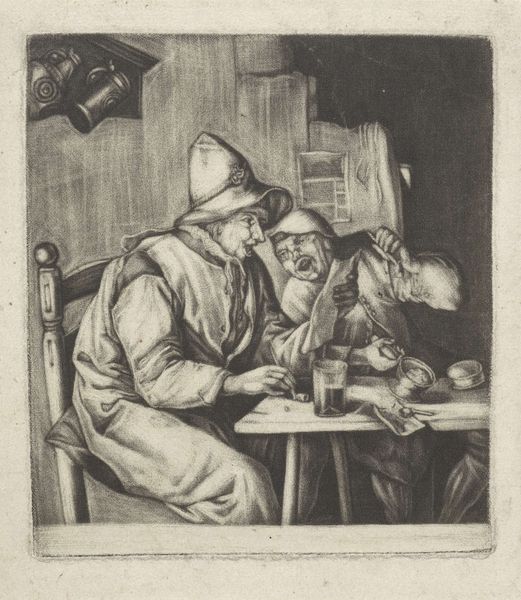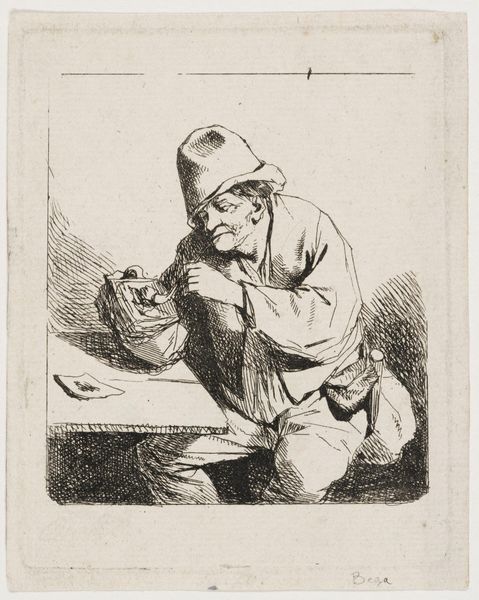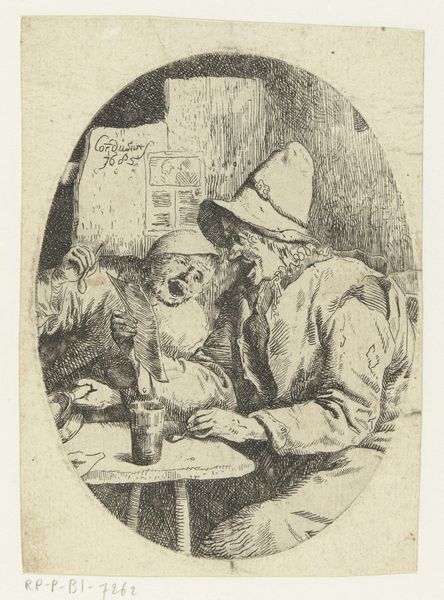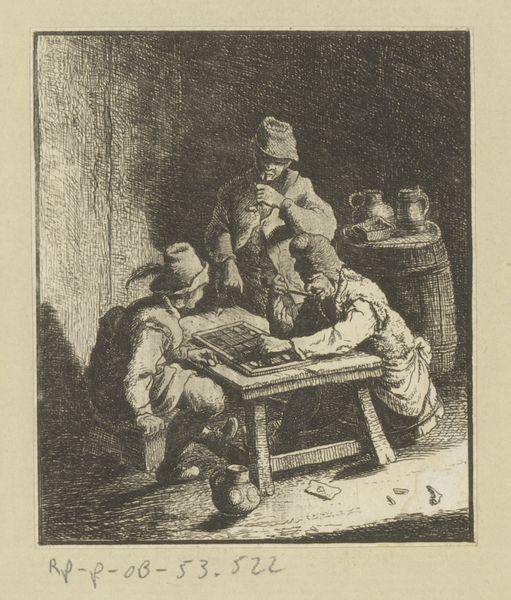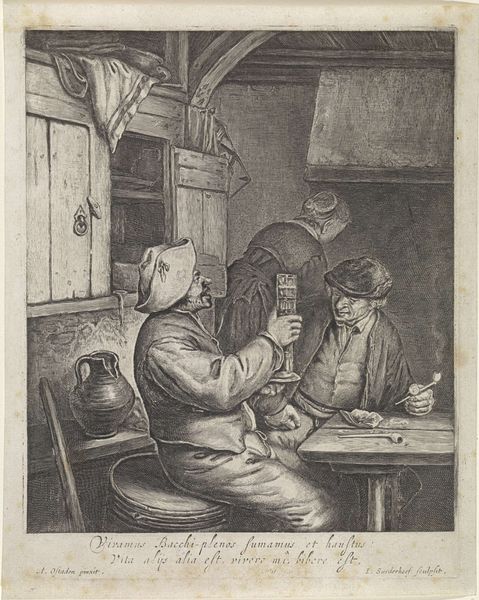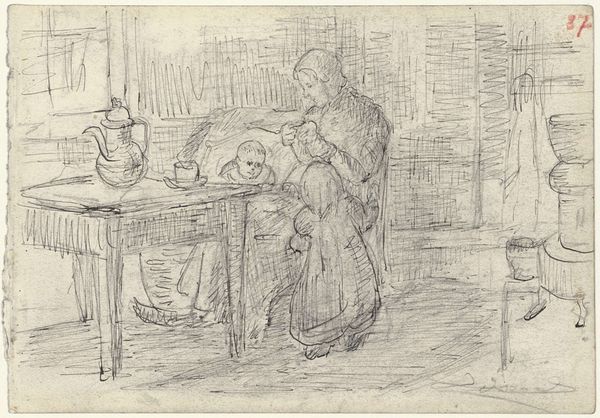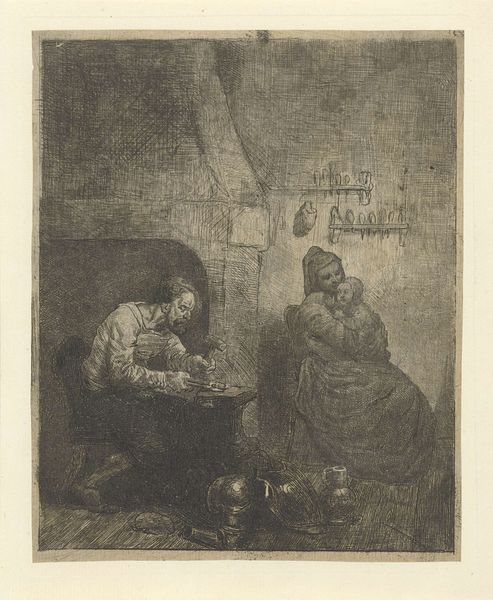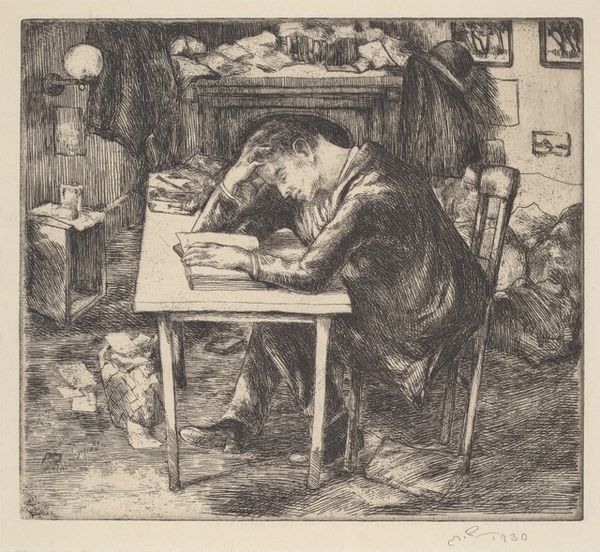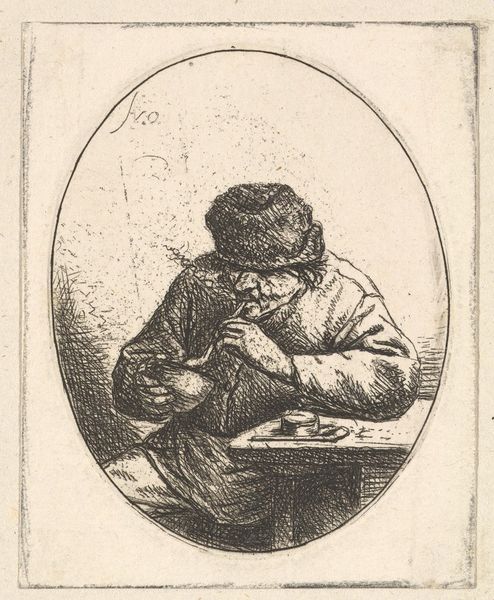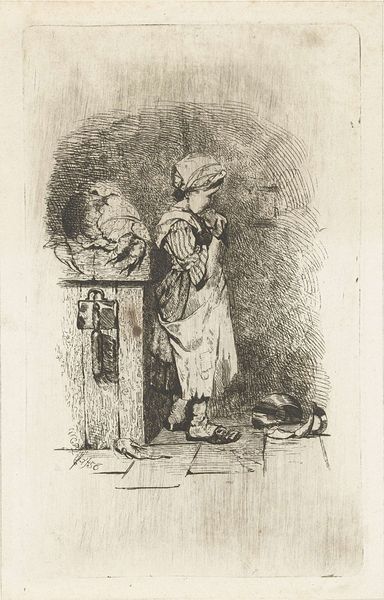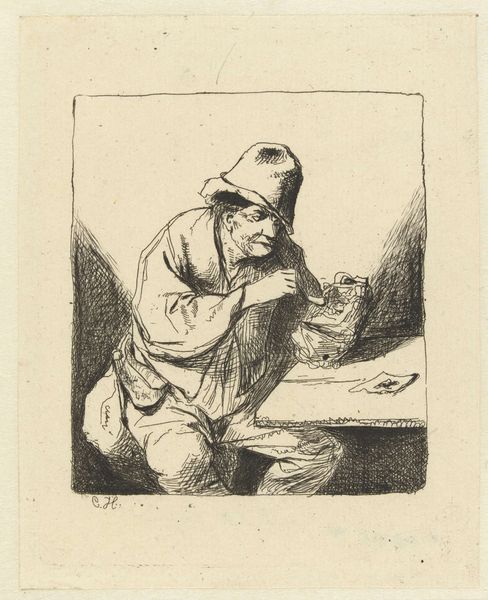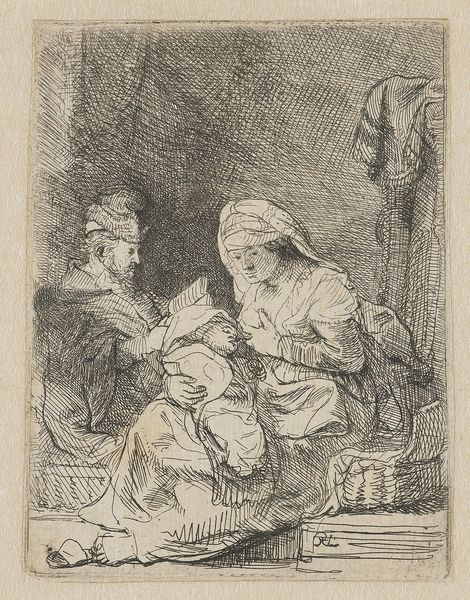
print, etching
#
dutch-golden-age
# print
#
etching
#
old engraving style
#
figuration
#
genre-painting
Dimensions: height 109 mm, width 102 mm
Copyright: Rijks Museum: Open Domain
Editor: This etching from 1685, “Two Singing Men in a Tavern” by Cornelis Dusart, really throws you into a smoky, lively bar scene. The figures are so expressive, and the details, considering it’s an etching, are captivating. How do you interpret the cultural significance of a piece like this? Curator: It's fascinating, isn't it? Genre scenes like these were hugely popular in the Dutch Golden Age. Etchings like this circulated widely, contributing to a developing visual culture. They weren’t just about depicting reality, they reflected and shaped societal values, ideas about leisure, class, and even morality. Look at their clothing, for instance; how does that reflect or play with class distinctions? Editor: Good point! Their hats definitely look different, signaling some kind of difference in status maybe? What was the public role of pieces like this? Curator: That’s key! Prints made art accessible to a wider public. They acted almost like newspapers or social media of their time, disseminating ideas and influencing public perception. Tavern scenes were loaded with meaning. Didactic messages, commentary on social mores, popular culture. Ask yourself: What kind of 'story' might Dusart be telling here about Dutch tavern life? Is it celebratory, cautionary, or something else? Editor: I never thought about art as being like early social media before! I guess these prints helped construct and reinforce societal norms? Curator: Exactly! And sometimes, subvert them. It's about understanding art's participation in the broader historical conversation. Reflecting on the dynamics of Dutch society through tavern depictions opens up interesting socio-historical angles, wouldn't you agree? Editor: I totally agree. I came into this thinking it was just a snapshot of everyday life, but it’s clearly way more than that. Now I'm curious to dive deeper into the politics of imagery in this period! Curator: Wonderful. And keep asking those critical questions – who, why, and for whom were these images made and consumed? The answers will change how you see everything.
Comments
No comments
Be the first to comment and join the conversation on the ultimate creative platform.
